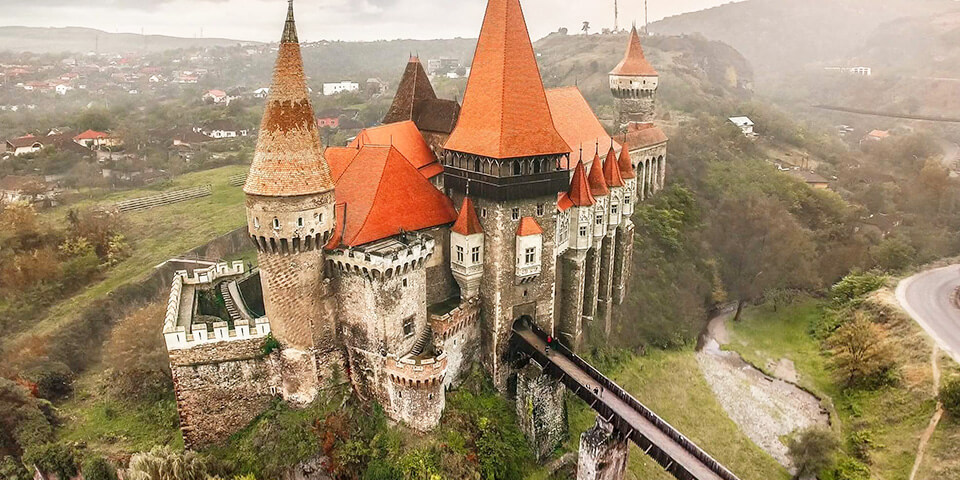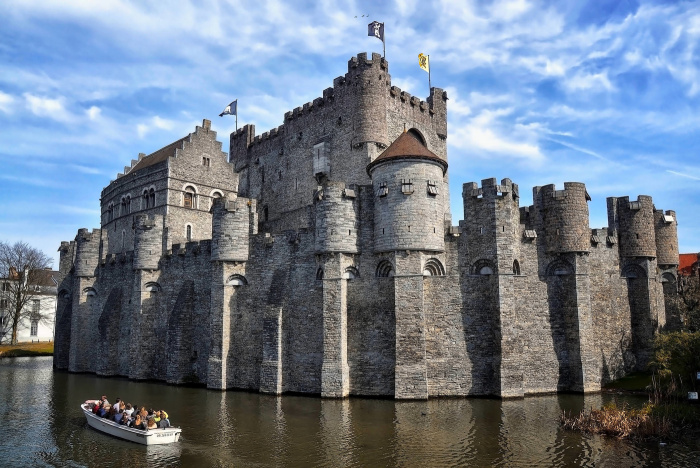The main defensive wall of the castle
In previous blessed times, when neighbors at the same table peacefully drank wine, hunted and competed in strength and dexterity, everything was simpler: a small house surrounded by a palisade. Then a bigger house and a wall of clay and lime blocks. And then, when the war of everyone against everyone knocked on our door, the houses turned into fortresses, and the fences into stone walls!
Both the castle and the wall were now built in such a way as to withstand a long siege, save them from captivity and shame, and stop the enemy! And each element played its important role. This also applied to the main wall of the fortress.
It should be of such height that the attackers could not climb it by ladders or with the help of siege towers, and, of course, very wide, thick. Then you can stop trying to quickly make a hole in it – the time will not be spent in vain, but a lot without an obvious result. Powerful trebuchet can, of course, bring down the roof of the towers or break the battlements. Most likely, the enemy uses soldiers with pickaxes, but then the castle defenders will be helped by loopholes, in which the arrows hid, and machicols, from which boiling water and red-hot resin will pour on the enemy.
At the top of the wall there is a battle passage. All possible weapons will be used here by the defenders of the fortress, hiding behind the battlements of the wall, in order to prevent the enemy from setting up assault ladders, making a dig, and breaking through a niche for an explosion.

The builders strongly recommended that towers protruding forward with loopholes and walkways be built into the wall. The towers also served to strengthen the corners – the weakest point of the wall, since it is in the corners of the fortress that the most enemy forces and the least defense forces can be concentrated.
Barbican and wolf pits
Barbican. No matter how strong the castle gates were, they still remained a weak link. Therefore, the builders of the glorious Middle Ages figured out how to protect the entrance to the citadel. And this building, guarding the gate, was the barbican – the outer fortification of the city or fortress.
What is the secret of the barbican? The fact that it cannot be bypassed, if you are going to break open the gates of the citadel, you must go through it!
And here was the trick of the barbican – the gate tower: this most powerful stone structure had a platform at the top, on which throwing guns were placed. Moreover, the barbican had two floors. On the first – a through passage with a width slightly larger than the dimensions of the wagon. A small detachment, having got here, turned out to be cut off from the main one by an iron grate falling from above, from the outside, and by strong gates, locked with a powerful bolt, from the inside!
The guards serving on the second floor, having opened the hatches in the floor, could pour (and poured!) Hot tar or boiling water on the enemies rushing to the main gate.
In fact, the barbican was the only way to the castle and, of course, perfectly guarded.
Wolf holes. Another terrible obstacle on the way to the castle was the wolf pits – cunning and cruel structures that were invented by the ancient Romans. The pit was arranged in such a way that, firstly, it had inclined (inwards) walls. Therefore, getting out of it was not so easy. Secondly, short pointed stakes were driven into its bottom in several rows. Having fallen into this disguised trap, a person almost always lost the opportunity to stay alive, and his soul flew off to God after severe torment of the body.

Enemy infantry was doomed if they fell into the locations of the wolf pits. And they were waiting for the victim on the approaches to the castle, and at its walls, and at the gates of the barbican and the fortress itself, and even on the approaches to the donjon.
Medieval castle – main gate
Gates – the most vulnerable part of the castle, were installed in the gate towers. Most often, the gates were double-leaf, and the wings were knocked together from two layers of boards. In order to prevent them from being set on fire from the outside, they were upholstered with iron. In one of the doors of the gate there was a small narrow door, which could only be entered by bending over. An additional reinforcement of the gate was a transverse beam, which wound into hook-shaped slots on the walls.
Behind the gate was a drop-down portcullis. Most often it was wooden, with iron-bound lower ends. But there were also iron gratings made of steel tetrahedral rods.
The grate hung on ropes or chains, which, in case of danger, could be cut off so that it quickly fell down, blocking the way for the invaders. From the point of view of defense and protection of the castle, the gate was of great importance. Therefore, the medieval castle was built for a long time, painstakingly, taking into account all the features of the hostilities of the enemy.
